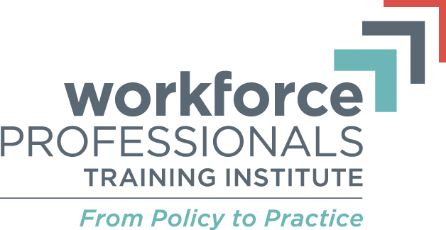What is the future of retail workforce? What are the best and emerging retail workforce practices? What do we know about job quality and economic opportunity in retail? We tried to address those and many other questions during the “Opportunity in Retail” sector convening organized by the Workforce Field Building Hub and The Center for Popular Democracy on June 13, 2018.

Opening remarks by Stacy Woodruff, The Hub, Workforce Professionals Training Institute
Carrie Gleason (Center for Popular Democracy) set the tone for the day by presenting key findings from the Job Quality and Economic Opportunity in Retail report. Followed by two panels with distinguished guests representing businesses (Charles Branstool, Exit 9 Gift Emporium and Calvin Thomas, PostNet) and non-profit organizations (Allie Busching, Civic Works; Anika A. Campbell, The Door; Madeleine Case, Organization United for Respect) provided a forum for sharing timely research, business perspectives, and workforce practitioner strategies relevant to one of the economy’s largest sectors, retail, for nearly 40 organizations represented at the convening.

From Left: Christine Curella (NYC Mayor’s Office of Workforce Development), Charles Branstool, Calvin Thomas, Carrie Gleason, Stacy Woodruff, Allie Busching, Madeleine Case, and Anika A. Campbell.
The challenges and opportunities arising in the retail sector are many, and through convenings such this we create the space for stakeholders from across the workforce development field to access the tools, resources, and potential partnerships necessary to meet the needs of business customers and job seeking and/or working clients. The retail sector is changing and we need to keep the conversation going.
We are also sharing research and resources referenced during the convening. To access reports go to Hub Resources page.
- Job Quality and Economic Opportunity in Retail: Key Findings from a National Survey of the Retail Workforce (The Center for Popular Democracy): Findings from a national survey of the retail workforce conducted by the Fair Workweek Initiative to better understand how people working in retail navigate their careers and adapt to the demands of market forces.
- National Survey of Retail Workers: Key Insights for Workforce Development (The Center for Popular Democracy): Key insights on how the retail workforce receives training and navigates their advancement from a national survey of 1,100 retail workers employed across major companies and within 13 retail sub-sectors.
- Pathways to Success: The Need for Accessible, Appropriate Trainings for Retail Workers (The Center for Frontline Retail, The Community Development Project at The Urban Justice Center): Addresses the need to have the quality training or other professional development opportunities for retail workforce and the lack of access to it. The research explores the training and advancement of barriers and opportunities for retail workers in New York City.
- Planning for Diversity: Supporting NYC’s Neighborhood Businesses (The New York City Council): A report analyzing data from the Quarterly Census on Employment and Wages, Economic Census, and City land use data to reveal trends affecting neighborhood retail across the city, and proposes interventions to correct market failures calling for innovative uses of the City’s zoning, land use, and planning powers as well as new financial assistance and economic development tools to improve retail diversity and preserve neighborhood character.
- Decline in Retail Jobs Felt Entirely by Women (Institute for Women’s Policy Research): A graphic presentation of data related to overall jobs losses in retail, including differences in jobs by women compared to men.
- What’s in Store: The Future of Work in Retail (The Aspen Institute Economic Opportunities Program): Showcases data on who works in retail, how the retail industry is changing, and projected change in employment for the largest retail occupations (2016-2026).


Leave a comment!